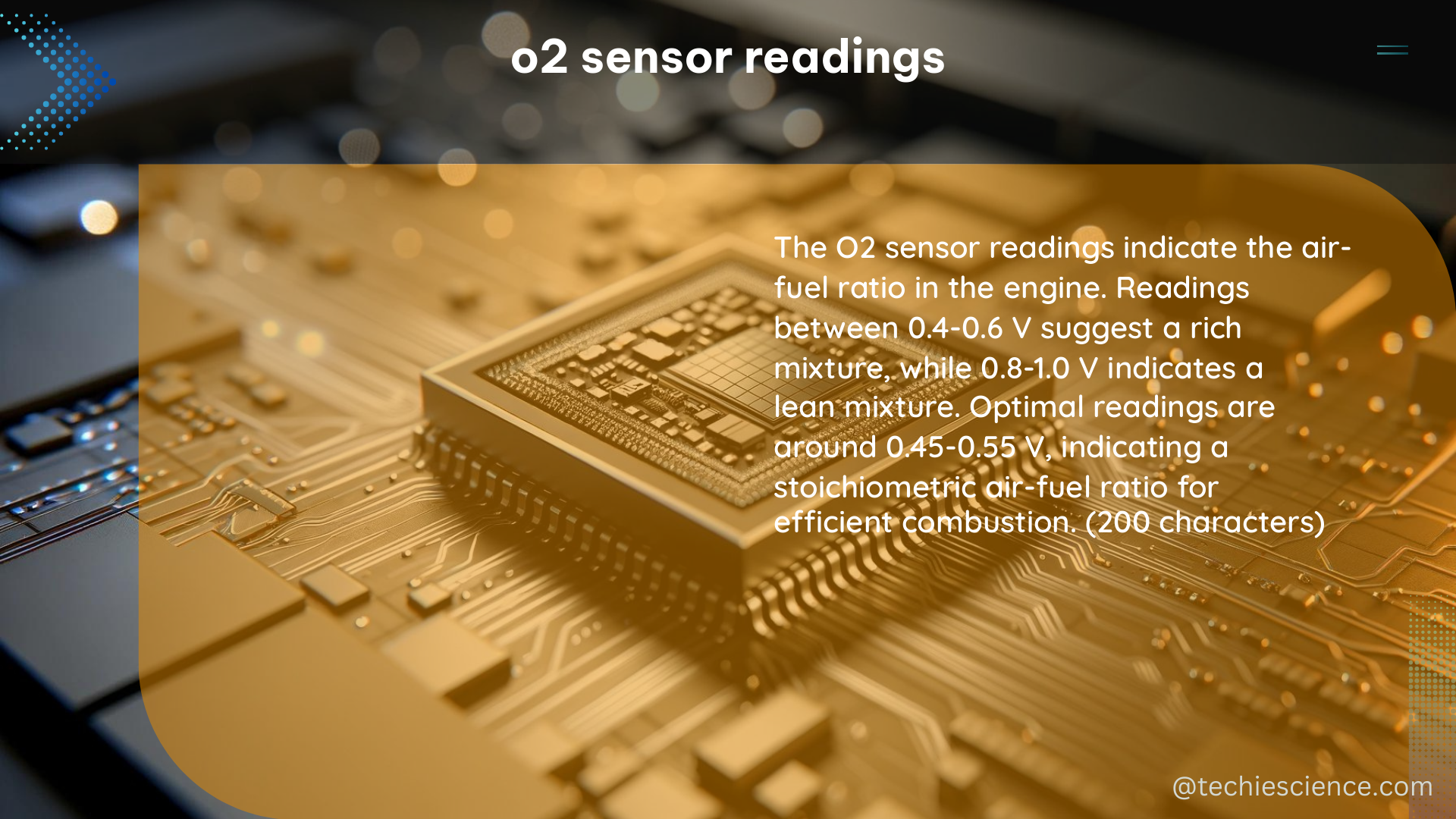O2 sensor readings are a crucial aspect of diagnosing and understanding the performance of an engine’s fuel system. These readings provide valuable insights into the air-fuel ratio, catalytic converter efficiency, and overall engine health.
Understanding O2 Sensor Voltage Ranges
O2 sensor readings are typically measured in volts, and the voltage range can vary significantly depending on the air-fuel mixture:
- Lean Mixture: Approximately 0.1 volts
- Balanced Mixture: Around 4.5 volts
- Rich Mixture: Approximately 0.9 volts
These voltage readings are crucial for identifying potential issues with the engine’s fuel system and catalytic converter.
Analyzing O2 Sensor Readings in a 2002 MR2 Spyder

In the case of a 2002 MR2 Spyder with a PID 0420 code, the O2 sensor readings can provide valuable insights into the catalyst system’s efficiency. Here’s a closer look at the data:
-
O2B1S1 vs. O2B1S2: In certain sections of the data log, the voltage on O2B1S1 is lower than that of O2B1S2. This could indicate an issue with the catalytic converter’s efficiency on Bank 1.
-
Sensor Relationship: Ideally, the O2 sensors on the same bank should track each other closely, with O2B1S2 never having a higher voltage than O2B1S1. Any significant divergence between the sensors on the same bank could indicate an issue with one or both of the sensors or the fuel system’s performance.
Understanding Bank Trimming and Cylinder Differences
It’s important to note that each bank can be independently trimmed based on individual cylinder differences in airflow, compression, spark, and fuel delivery. The best-case scenario is that the trim changes average out for all cylinders on the particular bank.
- Airflow Differences: Variations in cylinder airflow can affect the air-fuel ratio and, consequently, the O2 sensor readings.
- Compression Differences: Uneven cylinder compression can also impact the air-fuel ratio and O2 sensor performance.
- Spark Timing Variations: Inconsistencies in spark timing across cylinders can lead to differences in the air-fuel mixture.
- Fuel Delivery Discrepancies: Variations in fuel delivery to individual cylinders can cause imbalances in the air-fuel ratio.
By understanding these factors, mechanics and enthusiasts can better interpret the O2 sensor readings and identify potential issues with the engine’s fuel system.
Utilizing O2 Sensor Data for Troubleshooting
O2 sensor readings are a critical component of diagnosing and understanding an engine’s fuel system performance. By analyzing the relationship between sensors on the same bank and considering individual cylinder differences, you can gain valuable insights into potential issues and optimize your engine’s performance.
Here are some key steps to effectively utilize O2 sensor data for troubleshooting:
- Collect Comprehensive Data: Gather a detailed data log of the O2 sensor readings, including voltage fluctuations, response times, and any discrepancies between sensors on the same bank.
- Analyze Sensor Relationships: Examine the relationship between the O2 sensors on the same bank, ensuring that O2B1S2 does not have a higher voltage than O2B1S1.
- Identify Cylinder Differences: Investigate potential variations in airflow, compression, spark, and fuel delivery across individual cylinders, as these can impact the O2 sensor readings.
- Evaluate Catalytic Converter Efficiency: If the voltage on O2B1S1 is consistently lower than O2B1S2, it could indicate an issue with the catalytic converter’s efficiency on Bank 1.
- Correlate with Other Diagnostic Data: Cross-reference the O2 sensor readings with other diagnostic data, such as engine performance, fuel system parameters, and emissions testing results, to gain a comprehensive understanding of the engine’s condition.
By following these steps and leveraging the wealth of information provided by O2 sensor readings, you can effectively diagnose and resolve a wide range of engine performance issues.
Conclusion
O2 sensor readings are a powerful tool for understanding and optimizing an engine’s fuel system performance. By mastering the interpretation of these readings, mechanics and enthusiasts can identify and address a variety of issues, from fuel system imbalances to catalytic converter problems.
Remember, the key to success lies in a thorough understanding of the voltage ranges, sensor relationships, and individual cylinder differences that can impact the O2 sensor data. By applying this knowledge, you can unlock the full potential of your engine and ensure optimal performance.
References
- O2 Sensor Analysis: I Have Data and Charts – Troubleshooting PID 0420
- How to Diagnose and Fix an O2 Sensor Problem
- Odd O2 Sensor Readings

The lambdageeks.com Core SME Team is a group of experienced subject matter experts from diverse scientific and technical fields including Physics, Chemistry, Technology,Electronics & Electrical Engineering, Automotive, Mechanical Engineering. Our team collaborates to create high-quality, well-researched articles on a wide range of science and technology topics for the lambdageeks.com website.
All Our Senior SME are having more than 7 Years of experience in the respective fields . They are either Working Industry Professionals or assocaited With different Universities. Refer Our Authors Page to get to know About our Core SMEs.